When Max Exsted was a little boy hitting on neighborhood tennis courts near his home in Savage, people walking by would stop and stare. Without thinking or asking, they would take out their phone and start filming. They could see the ripple in the continuum: a boy that small should not be able to swing a racquet like that.
Max's family saw it sooner.
One day they took a short video of Max working on his ground strokes. He is impossibly tiny wearing little red shorts, a little blue shirt and a little blue bandana. You can hear his dad, Chris, excitedly holler, "Hop into it!" right before Max hops, winds up and pummels a ball into the camera.
They posted it on YouTube with the succinct title: "Max (4 years old) practices tennis." A few days after it went up someone from Nike called asking if the video was real. It has been viewed more than 860,000 times.
As he kept exploring the sport, Max started hitting balls against a rectangular windowpane in a door on the Exsteds' four-season porch, a surprise to his family. The porch looks out on a wooded backyard and is tucked off the kitchen. Max hit endlessly, his power increasing until Chris looked out one day and noticed the glass was bowing. That was the end of the porch sessions.
Max's parents, brother and sister all played college tennis, but they were not like him. On the tennis courts of Minnesota, no one was like him. The Exsteds knew if Max was going to find the highest expression of his game, they had to seek out the highest level of competition. It could not be found at home.
The epicenter for youth tennis development in the United States is in Florida. When Max won his first national championship at 12 years old, his parents decided to uproot his life.
They pulled him out of the Shakopee public school system after sixth grade and enrolled him in online classes, sending Max to start training at the United States Tennis Association's national campus in Orlando. Whatever fear they felt was tempered by Max's desire to play professionally.
"There was always a plan and goals," he said. "I was focused on that."
Max is now 16, and, by any metric available, one of the best junior tennis players in the world. Over the past five years he has won national championships in singles and doubles and, at various times, reached No. 1 in the USTA rankings for boys 12-and-under, 14-and-under and 16-and-under.
Talk to anyone involved with tennis about Max's progression and they will acknowledge two dichotomous truths: His accomplishments are incredible, and they guarantee him nothing.
That's why last year was a swirl of airports and international tennis matches. January in Costa Rica and Ecuador. February in Paraguay and Brazil. May in Spain and Italy. June at the French Open. July at Wimbledon. September at the U.S. Open. Back to Spain in November for the Junior Davis Cup.
The journey Max is on is grueling and full of sacrifice, not just for the athletic space he is trying to occupy but for the family that surrounds him with their time, money and support. His last tether to any semblance of a normal childhood that is quickly coming to an end.
His 2024 season will, once again, catapult him around the world. It started with a bang at the Australian Open in January, when he won his first junior Grand Slam trophy in boys doubles. The milestones come quick and recede into the daily focus on incremental improvement. Most of his matches this year will be junior or entry-level pro events played with no broadcast cameras and few people watching.
The ultimate goal is the ATP Tour, the top professional men's tennis circuit. Few Minnesotans have ever made it. Everyone involved knows it could take years. Max's dad has a mantra, "We're all in." But he often adds a caveat, "You have to be a little crazy to do this."

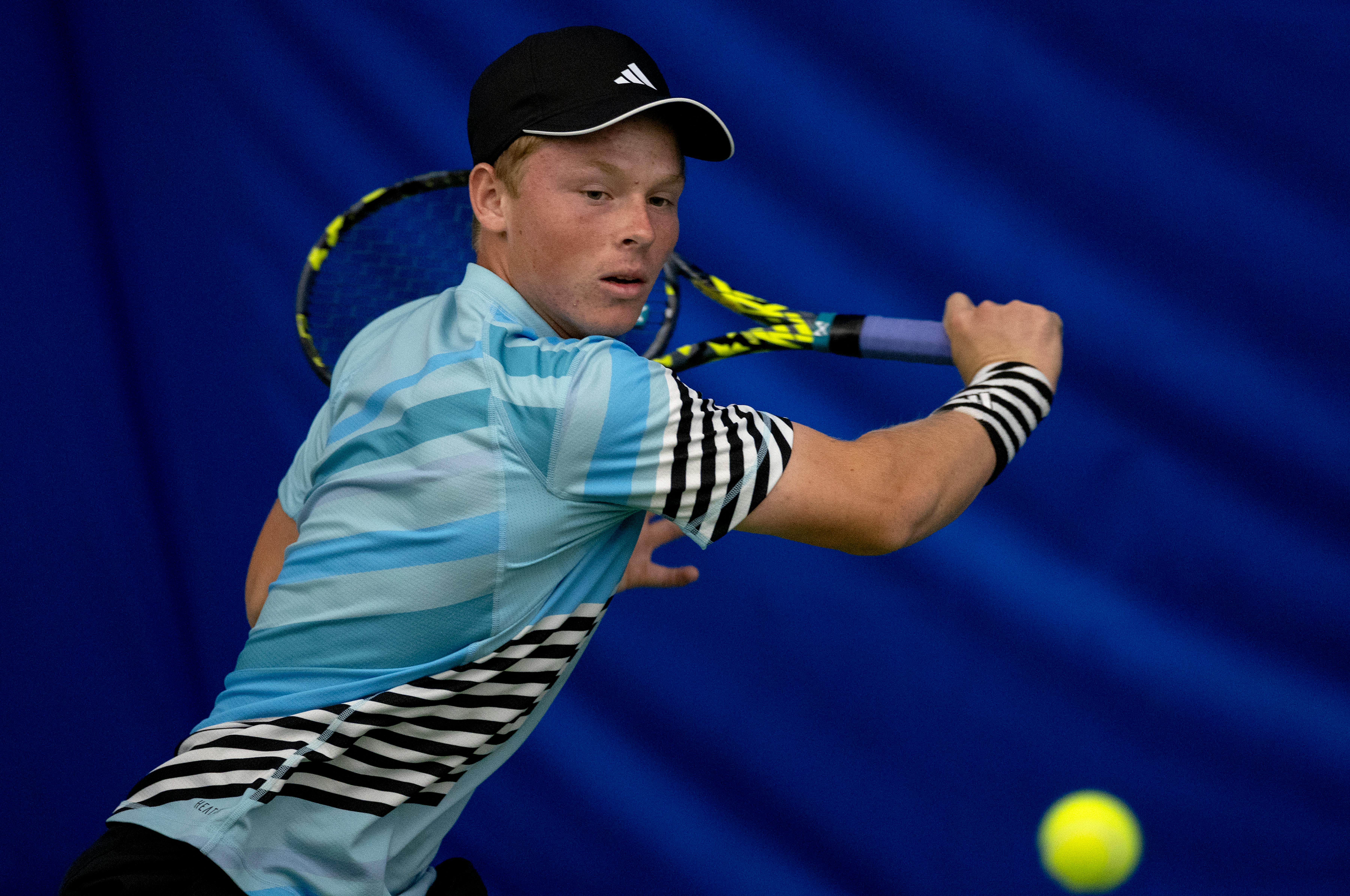
Max Exsted won his first national championship when he was 12 years old, left. Now he's 16, right, and the reigning Australian Open boys doubles champion.
'I always felt a bit different'
For most of his life, everyone mentioned how small Max was. He often played against boys four or five years older, and it added to the dynamics of watching him on the court. Little boy, huge swing. When he played team tennis for the first time, his teammates stood him in the ball rack for the annual photo.
"From a really young age, I always felt a bit different," he said.
But Max has grown into his body and his confidence.
He has tousled sandy blonde hair that sweeps above his justifiably sleepy green eyes. He describes himself as "just a pretty chill guy," and that shows, despite the occasional itchy attention span.
His parents still ask him routinely if he is OK with the professional path he's on. For now there are no plans for college, though he could earn a scholarship to play anywhere in the country. He takes his online Excel High School courses in the gaps of his life — in the backseat of the car, on a plane, in the hotel room.
What does Max want?
"My goals have always been to win Grand Slams, be No. 1, definitely winning the U.S. Open is probably my biggest goal," he said. "It would be amazing."
He was sitting at his kitchen table on a rare visit home to Savage, eating pizza, nibbling on vegetables and watching a replay of an NBA game when he said this. It sounded like the kind of outlandish thing any teenager would dream up, but to him it's possible.
It was also a reminder that he's lived an insulated, utterly different childhood: hitting next to castles in London; training sessions with American pros like Chris Eubanks and Madison Keys; practicing on Paris red clay at French Open courts next to Novak Djokovic and Coco Gauff; getting sponsored clothes and shoes from Adidas and sponsored strings, racquets and bags from Babolat.
His family is both thrilled at what he's accomplishing and worried about the pressure he's under.
His brother, Alex, who is seven years older, played tennis at Northern Colorado. He works in downtown Minneapolis for a software company and still coaches tennis. Alex sees genius in his brother but knows a tennis life is grinding. He sometimes wishes he could bring Max to work for a week to show him what a 9-to-5 job is like, figuring that would keep him passionate in his pursuit.
"I think he is very special," Alex said. "I try not to overload him."
Max's older sister, Isabelle, was his first hitting partner. She played tennis at North Carolina Central after spending three years at an academy in Florida and now runs an online clothing store.
"I was trying to get to the highest level in Florida and training very intensely and doing tournaments," she said. "I thought, 'Wow I'm in one of the best positions in tennis to be the best I can be,' not knowing there's a whole other level."
Max's parents didn't know at the time, but Alex and Isabelle were showing the way. Alex played some national junior tournaments and Isabelle played in the Caribbean on the International Tennis Federation circuit.
"They were our guinea pigs," their mom, Jodi, joked.
A family member always travels internationally with Max, a necessary, vital companion. When Chris is the chaperone, he balances the changing time zones with his professional life as a sales rep in Minnesota, waking up in the middle of the night to take conference calls. Jodi, an attorney, feels more of Max's absence; in the past year she hasn't traveled with her youngest son as much as she'd like.
There are perks to seeing the world — catching a show on Broadway in New York City, watching FC Barcelona in Spain — but this is also work. Marathon flights, countless bus rides, obscure tournament registration rules, wonky courts, long days. The family bought their own racquet-restringing machine to keep costs down, and they haul it everywhere they go.
When Max trains in Florida, his family returns to their everyday lives in Minnesota.
The Exsteds spent nearly $50,000 out of pocket in 2023 to support Max. Alex gave a large loan to his parents to help cover expenses. The USTA development program provides Max with lodging and coaches. The second he leaves it, the personal costs will explode. Money will have to be found in wins or sponsorships.
Tennis is a deeply solitary sport. A family member always travels with Max internationally, but when he's training in Florida, they return home to Minnesota.
'Rare air that he is in'
Tennis is a sport built on isolation.
In singles, players are on the court by themselves, staring down an opponent who wants to slowly erode their physical and mental wherewithal. Coaching during a match is mostly restricted and often occurs via a series of frustrated gesticulations when a player is losing their confidence, their nerve, their mind.
There are no guaranteed contracts, despite the demands of nonstop travel with the support team necessary to remain ranked high enough to get a spot in top tournaments. And while the very best players receive rich sponsorship deals, when it comes to earnings on the court, everyone starts the year at $0. You get paid if you win.
In America, tennis has suffered from a lack of funding and visibility, especially on the men's side where it has been 20 years since the country produced a Grand Slam singles champion.
The USTA is trying to fix that and has built up depth, with 10 men currently ranked in the top 100. But it has been operating under budgetary restraints and cut staffing levels by 20% in 2020 during the pandemic. That included restructuring the player development program in Orlando.
Max lives and eats at the sprawling campus, where he works with tennis coaches, mental health coaches and trainers — an investment estimated in the hundreds of thousands of dollars. The program also surrounds him with a network of friends and peers in the game who are playing at his level, a globe-trotting crew of top American talent.
Max teamed up with Darwin Blanch and Jagger Leach, Lindsay Davenport's son, to win bronze at the Junior Davis Cup. Cooper Woestendick was his Grand Slam-winning doubles partner at the Australian Open. Right after that, their friends Iva Jovic and Tyra Grant won the girls doubles trophy.
"A pretty special bond," Max said. "Same tournaments, playing doubles, we're together all the time."
Sylvain Guichard, who coached Max over the past two years, explained how critical this time is for his hopes of becoming a professional.
"The transition to pro tennis really happens post-puberty, more or less — it starts around 15 or 16 years old," Guichard said. "It is a global sport. What does it take to be Top 100 ATP? You have to start to get in with international competition.
"A guy like Max has done really well in the younger categories and he understood that he was one of the top two or three best ones that we have in his age group, then it's time to figure out the next level."

Even before Max, the whole Exsted family played tennis to collegiate level. He and his brother Alex, right, grew up playing at InnerCity Tennis in south Minneapolis.
The next level does not come easy. Max is losing more than he ever has as the competition ramps up, but he opened 2024 as the No. 36-ranked junior in the world and No. 9 for his age group.
The only time he played competitively in Minnesota last year was at the Excellence Cup in December, a fundraising event put on by the InnerCity Tennis Foundation at its indoor courts in south Minneapolis.
It featured a number of the best young players in the Midwest. In the semifinals, Max played Hunter Heck, who grew up in New Brighton and recently graduated from Illinois with All-Big Ten and All-America honors. He is five years older than Max and starting his pro career.
Max's forehand is tightly wound and ballistic, but his touch around the net was equally delicate. When Max gently lofted a drop shot then sprinted in to put away a volley return, Heck hollered incredulously, "Oh yeah right!"
Max would bend his head into his chest and implore himself, "Let's go, Max, right here!" He paced the baseline like a caged animal. But Heck was dynamic and composed and, at critical moments, Max's backhand wavered as he lost a tight match.
While his coaches work with him on adjusting his grip, getting more spin on his down-the-line forehand and developing his overall identity on the court, learning to lose is also part of being great in tennis.
"I'm super competitive, but you have to live with it," Max said. "You're going to travel to a lot of places and maybe lose first round. You have to turn around the next week and there's another one."
One of the only Minnesotans to reach the highest levels of the ATP Tour is David Wheaton. He was a phenomenal junior player, winning the junior U.S. Open in singles and an NCAA title as a freshman at Stanford before turning pro.
"It is rare air that he is in," Wheaton said of Max.
Wheaton was able to convert his junior promise into professional success. He reached No. 12 in the world in singles in 1991, beat Andre Agassi in the Wimbledon quarterfinals and won the Grand Slam Cup and the $2 million check that came with it.
When he heard the details of Max's life, Wheaton nodded his head reflectively.
"You're one of the few players in the country going to play these junior Grand Slam events. Can you make it to the next level beyond that?" he said. "Things are not perfectly predictable and static and 'if you're here now, you're going to be here in a year.' It doesn't work that way. It just doesn't."
That progress ultimately falls on Max. It is what makes being young and great at an individual sport so tricky: Your team has to be built off the court.
"It takes a really supportive family," Wheaton said.
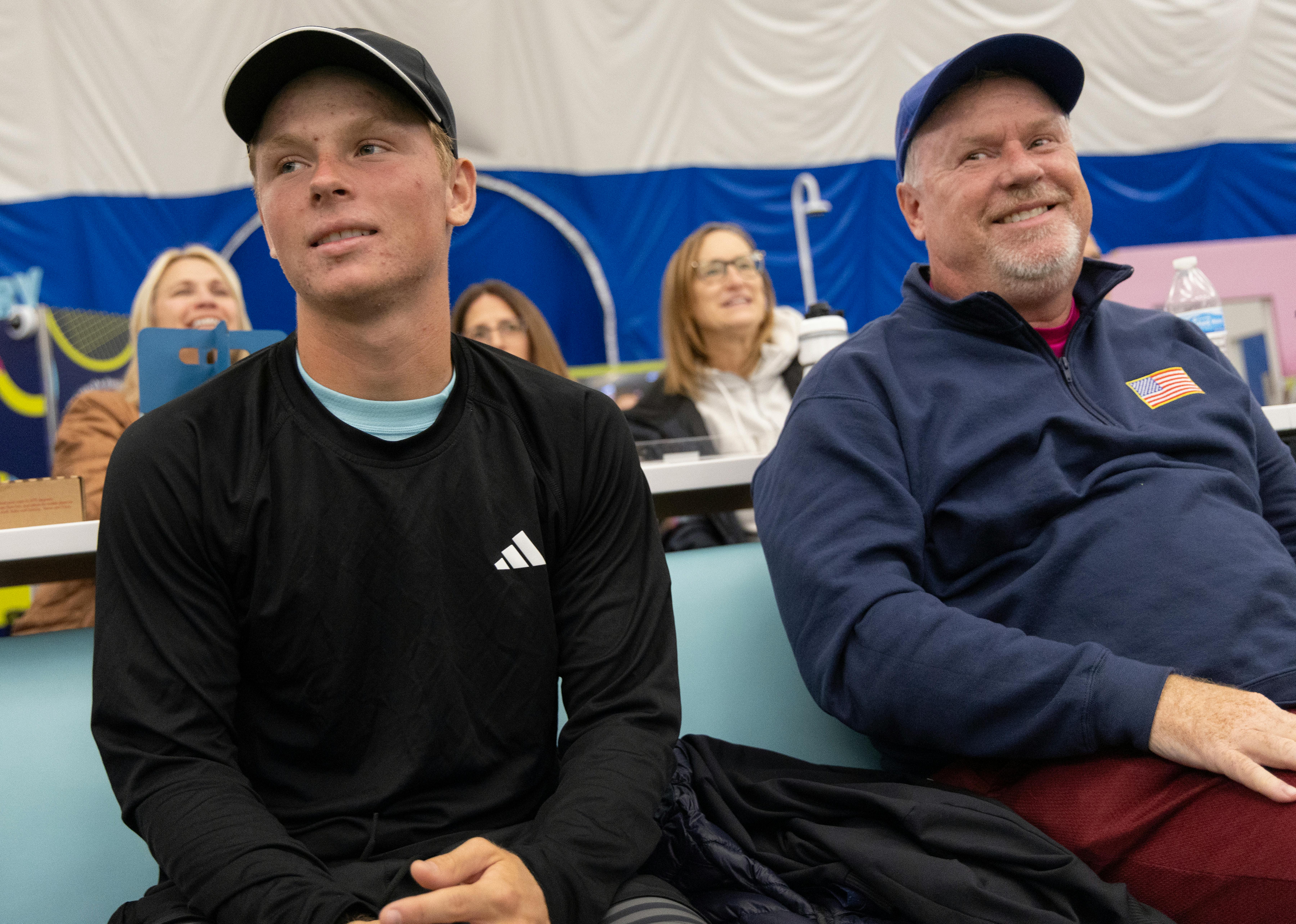
The last time Max played competitively in Minnesota, at InnerCity's Excellence Cup in December, his dad Chris, right, savored the rare chance to watch his son play in familiar territory.
Nice to be home
The Exsteds pointed out dents in the wall next to their pingpong table, happy scars from intense battles. They finished their basement when their kids were growing up — space to play, a room with recliners to watch sports.
It sits mostly quiet these days.
Max and Isabelle circled the table and picked up paddles. Max can hit a pingpong ball about how you'd expect — faster than the eye can see and deep in the corners.
The family talked of old tennis matches, and laughed about opponents stealing points off Max when he was getting started in juniors. Max's focus was so intense he would forget to keep score, so his parents bought him a watch to keep track and he forgot it was on his wrist.
Everyone wandered up to Max's bedroom, which is mostly untouched since he left for Florida. His stuffed animals were tucked up in the corner. A Nerf basketball hoop hung on the closet. Trophies and medals were strewn about his desk like paperwork.
Last year, Max spent only two weeks in Minnesota, but this is still home. "It's a nice feeling," he said. "I wake up in a different place, a lot."
It was three days after Christmas, and there was discussion about how they could watch the Timberwolves play the Mavericks. Chris suggested Buffalo Wild Wings. They talked about needing to get in practice sessions while Max was in town. Jodi chimed in, "Maybe Max could do his homework?"
Earlier, Alex said they were a tennis family and that meant, to their core, they were individualistic. But their deep shared history, their warmth for each other, radiated among them.
Two days later, Max was gone again. Back down to Florida. Then off to Australia. The rest of the world in wait. Still a boy, but just barely, chasing an improbable dream that feels achingly close, thousands of miles from home.
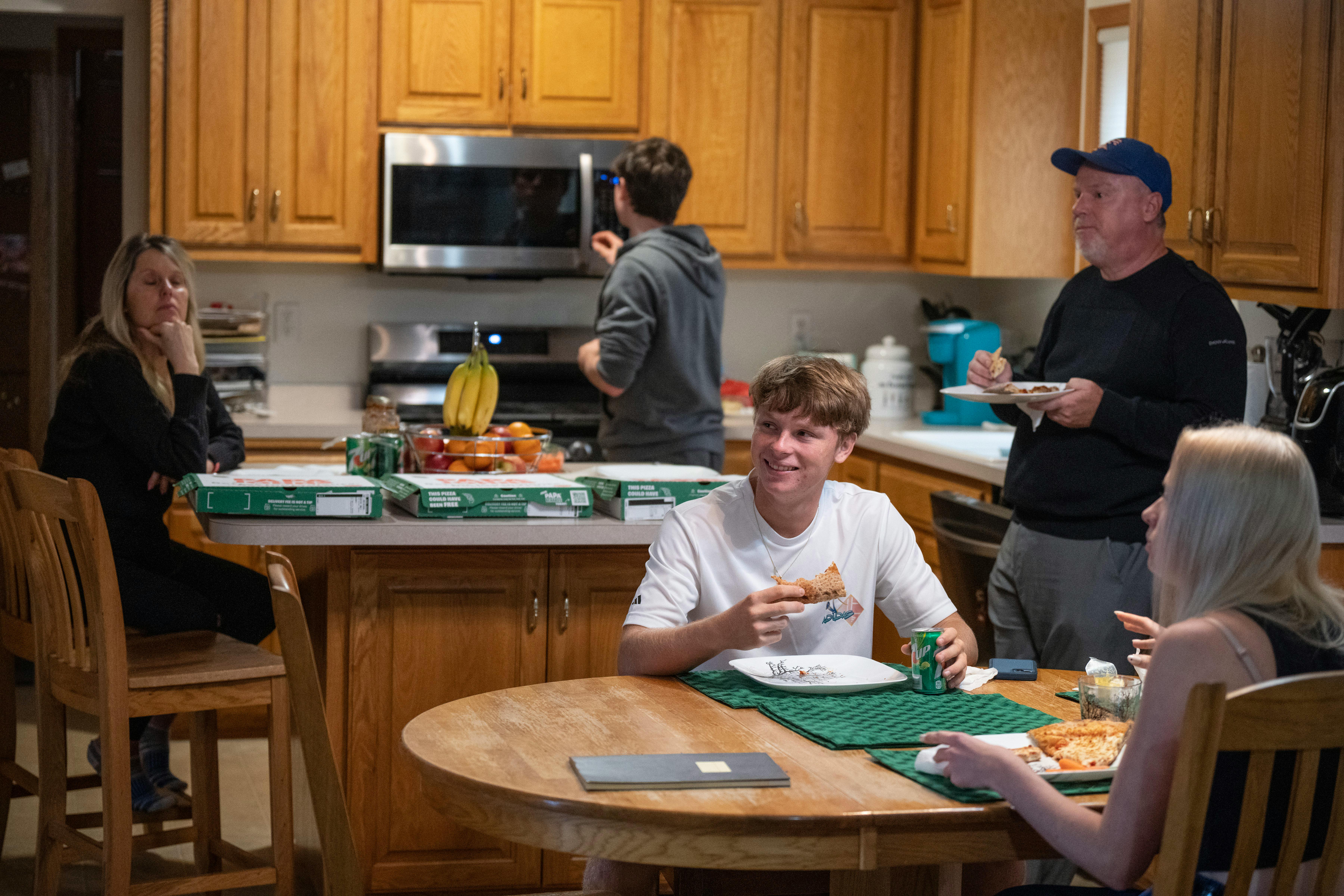
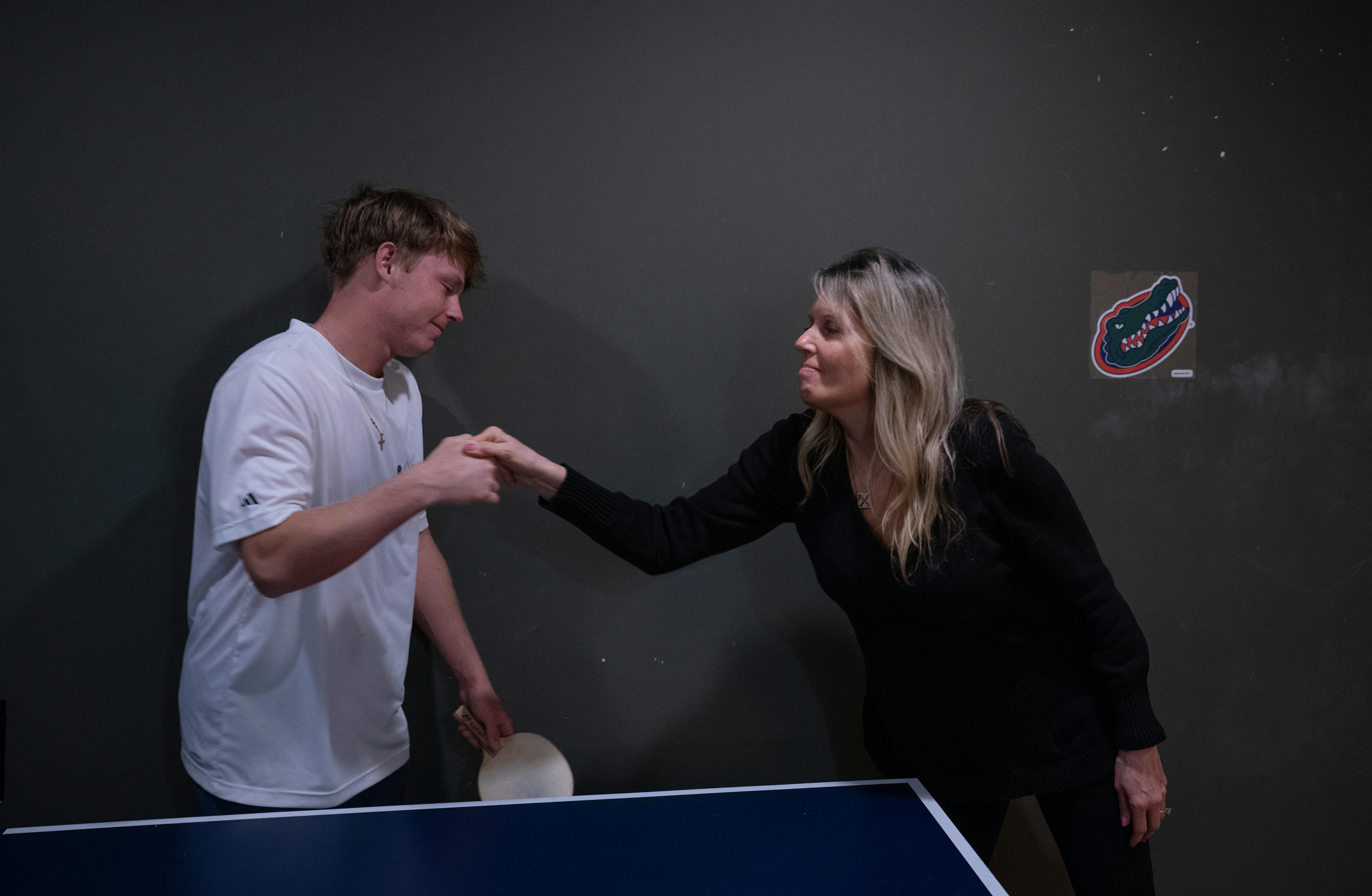
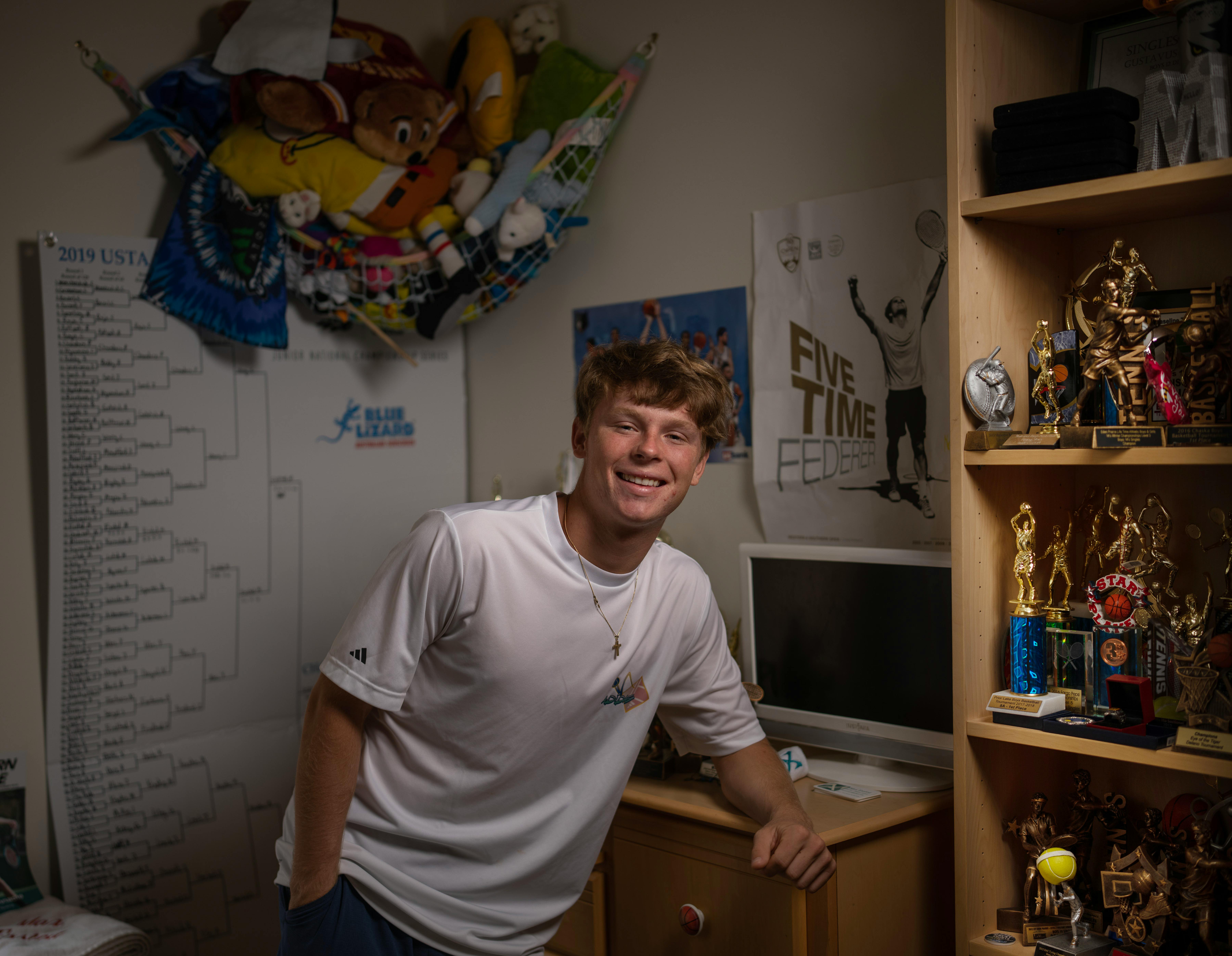
Max Exsted hasn't lived in Minnesota since he was 12 years old. In 2023, he spent a grand total of two weeks in the state. But despite everything, his parents' house in Savage is still home.